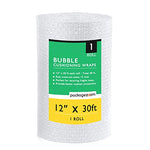You have no items in your shopping cart.
In today's world, where environmental concerns are becoming increasingly crucial, Waste-to-Energy (WtE) technologies have emerged as a potential solution to address waste management and energy generation challenges. These innovative technologies promise to convert waste materials into valuable energy resources, offering a sustainable approach towards waste disposal. This article delves into Waste-to-Energy Technologies, evaluating their pros and cons for a sustainable future. Let's explore how these technologies can pave the way towards a greener and more efficient tomorrow.
What are Waste-to-Energy Technologies?
Waste-to-Energy Technologies encompass a range of processes that convert municipal solid waste, biomass, and other organic materials into usable forms of energy. These technologies can include incineration, anaerobic digestion, pyrolysis, gasification, and landfill gas recovery. By harnessing the potential energy present in waste materials, these processes reduce landfill reliance and can contribute to a circular economy model.
Waste-to-Energy Technologies: Evaluating Pros and Cons
1. Incineration: Turning Waste into Energy
Incineration is one of the most widely adopted Waste-to-Energy Technologies. It involves the controlled combustion of waste at high temperatures, producing heat and electricity. The LSI Keyword "Waste-to-Energy Technologies: Evaluating Pros and Cons for a Sustainable Future" is highly relevant in this context.
Pros:
- Energy Generation: Incineration can produce a significant amount of electricity and heat from waste, reducing reliance on fossil fuels.
- Waste Volume Reduction: The process reduces the volume of waste, minimizing the need for landfills.
- Hazardous Waste Treatment: Incineration can effectively treat hazardous waste materials, mitigating their environmental impact.
Cons:
- Air Emissions: Incineration can release pollutants such as nitrogen oxides, sulfur dioxide, and particulate matter into the atmosphere.
- High Costs: Building and operating incineration plants require substantial investment.
- Public Perception: Concerns about potential health and environmental impacts have led to opposition from some communities.
2. Anaerobic Digestion: Producing Biogas from Organic Waste
Anaerobic digestion is a biological process that breaks down organic waste in the absence of oxygen, producing biogas, which mainly consists of methane.
Pros:
- Biogas Production: Anaerobic digestion yields biogas, which can be used for electricity generation and as a renewable natural gas source.
- Nutrient-Rich Residue: The digestion process creates a nutrient-rich digestate that can be used as a fertilizer.
Cons:
- Limited Waste Compatibility: Anaerobic digestion is most effective with organic waste, limiting its applicability to certain waste streams.
- Long Process Time: The digestion process can be slow, affecting the overall efficiency.
3. Pyrolysis: Converting Waste into Bio-Oil
Pyrolysis involves heating waste materials in the absence of oxygen, leading to the production of bio-oil, gas, and char.
Pros:
- Bio-Oil Production: Pyrolysis produces bio-oil, which can be used as a substitute for fossil fuels.
- Waste Volume Reduction: The process significantly reduces waste volume.
Cons:
- Energy Intensive: The pyrolysis process requires considerable energy input for heating.
- By-Product Management: Disposal of char and gas by-products can present challenges.
4. Gasification: Generating Syngas from Waste
Gasification is a high-temperature process that converts waste into syngas, a mixture of carbon monoxide and hydrogen.
Pros:
- Syngas Utilization: Syngas can be used for electricity and heat production or processed into biofuels.
- Reduced Landfill Dependency: Gasification decreases the need for landfills.
Cons:
- Complexity: Gasification plants are intricate and require careful operation and maintenance.
- Tar Formation: The process can lead to tar formation, potentially clogging systems.
5. Landfill Gas Recovery: Harnessing Methane from Landfills
Landfill Gas Recovery involves capturing methane generated from organic waste decomposition in landfills and utilizing it for energy.
Pros:
- Methane Utilization: Landfill gas, rich in methane, can be used as a renewable energy source.
- Methane Emission Reduction: Recovering methane from landfills helps mitigate greenhouse gas emissions.
Cons:
- Methane Leaks: Methane emissions can occur during gas recovery operations, contributing to climate change.
- Limited Lifespan: Landfills eventually reach capacity, reducing the longevity of this energy source.
Waste-to-Energy Technologies and Sustainability
Waste-to-Energy Technologies hold immense potential in contributing to a sustainable future. They offer a viable solution for waste management, reduce the burden on landfills, and provide renewable energy sources. However, striking a balance between energy generation and environmental impact remains crucial. The responsible implementation and continual improvement of these technologies are necessary to maximize their benefits for a greener and cleaner world.
FAQs
Q: Are Waste-to-Energy Technologies truly sustainable?
Yes, Waste-to-Energy Technologies can be considered sustainable when implemented responsibly. By converting waste materials into valuable energy resources, these technologies reduce the reliance on non-renewable fossil fuels and minimize landfill waste.
Q: How do Waste-to-Energy Technologies compare to traditional waste disposal methods?
Compared to traditional waste disposal methods, Waste-to-Energy Technologies offer several advantages. They provide energy recovery from waste, which is not feasible with landfills or conventional dumping. Additionally, they help reduce the volume of waste sent to landfills and decrease greenhouse gas emissions.
Q: What are the environmental implications of Waste-to-Energy Technologies?
While Waste-to-Energy Technologies offer benefits in waste management and energy generation, they are not without environmental implications. These technologies can release pollutants into the atmosphere, contributing to air quality concerns. Proper emission controls and waste segregation are crucial to mitigate these impacts.
Q: Can Waste-to-Energy Technologies be integrated into existing waste management systems?
Yes, Waste-to-Energy Technologies can be integrated into existing waste management systems. Governments and municipalities can adopt these technologies alongside other waste management strategies to achieve more sustainable waste solutions.
Q: What is the future outlook for Waste-to-Energy Technologies?
The future outlook for Waste-to-Energy Technologies is promising. As technology advancements continue, the efficiency and environmental performance of these processes are expected to improve. Increased public awareness and support for sustainability will likely drive further adoption of these technologies.
Q: How can individuals contribute to the success of Waste-to-Energy Technologies?
Individuals can support Waste-to-Energy Technologies by practicing responsible waste disposal, recycling, and advocating for sustainable waste management solutions. Supporting research and development in this field can also drive innovation and improve the effectiveness of these technologies.
Waste-to-Energy Technologies hold great promise in addressing the dual challenges of waste management and energy generation. By transforming waste materials into valuable energy resources, these technologies contribute to a sustainable future. However, their implementation must be carried out with careful consideration of environmental impacts, and continuous efforts should be made to improve their efficiency and effectiveness. As we embrace these innovative solutions and work towards a greener tomorrow, Waste-to-Energy Technologies can play a significant role in building a more sustainable and prosperous world.








